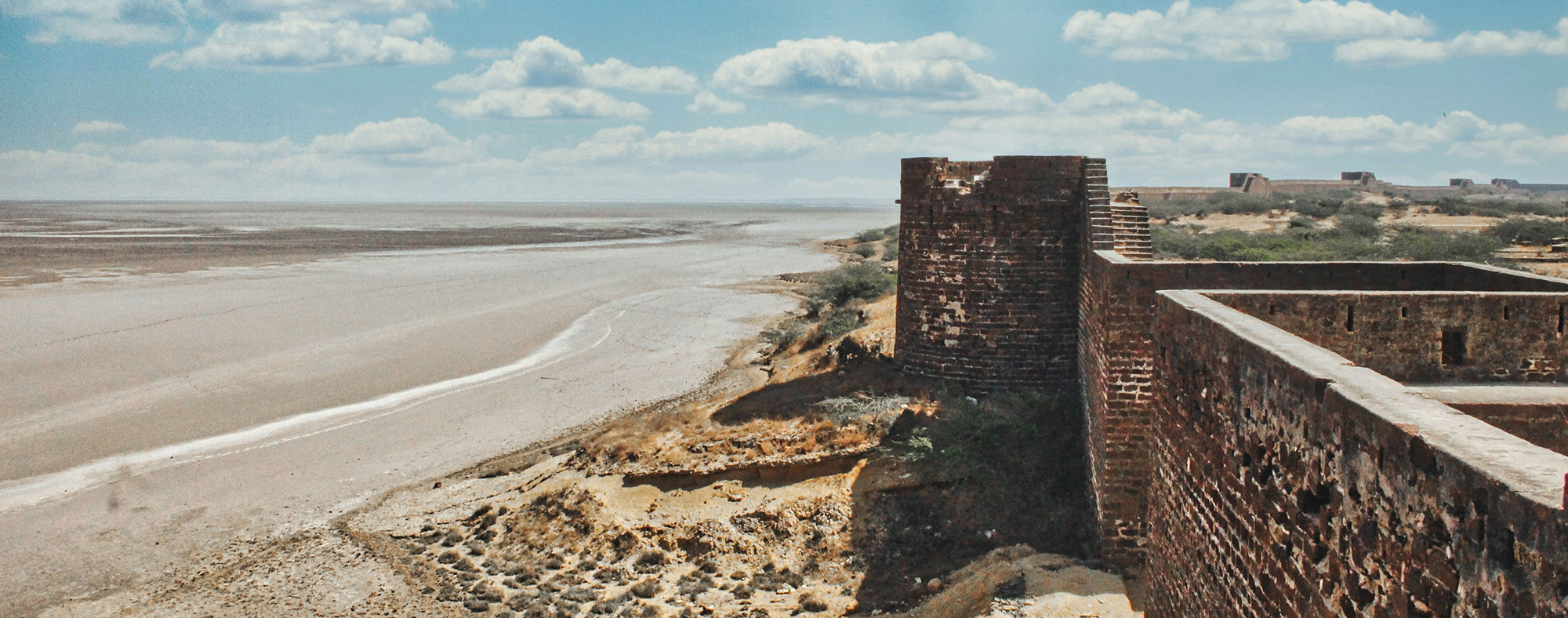Lakhpat
Lakhpat, a historic town in the Kutch district of Gujarat, India, was once a thriving port and a strategic trading hub. Located near the mouth of the Kori Creek, Lakhpat’s history is deeply intertwined with the rise and fall of maritime trade, political shifts, and natural calamities.
Early Prosperity and Strategic Importance
Lakhpat was founded in the early 16th century, and it quickly grew into a significant port town, thanks to its strategic location near the Arabian Sea. It served as a vital gateway for trade between Gujarat, Sindh, and other parts of the world. Goods like spices, silk, and precious stones were traded through its bustling port. The town’s name, “Lakhpat,” is believed to have originated from the immense wealth it generated, with some legends suggesting that it derived its name from the fact that it used to generate a daily revenue of “Lakh” (a hundred thousand) rupees.
The Decline and Shifting Tides
The town’s fortunes changed dramatically in the early 19th century when an earthquake in 1819 altered the course of the Indus River, leading to the silting up of the port and rendering Lakhpat’s harbor inaccessible. This natural disaster, coupled with changing trade routes, led to a rapid decline in Lakhpat’s prosperity. The town, once bustling with traders, slowly became desolate as the sea receded, and the population dwindled.
Architectural and Cultural Heritage
Despite its decline, Lakhpat remains a site of significant historical and cultural importance. The town is surrounded by a 7 km long fort wall, built by the Jadeja rulers of Kutch to protect it from invasions. The fort offers a glimpse into the architectural style of the period and provides panoramic views of the surrounding landscape, including the Rann of Kutch.
Within Lakhpat, several historical sites still stand, reflecting the town’s diverse cultural heritage. The Lakhpat Sahib Gurudwara is a revered site, believed to have been visited by Guru Nanak during his travels. The town also houses ancient mosques, temples, and tombs, including the tomb of Gosh Muhammad, a revered Sufi saint.
Lakhpat Today
Today, Lakhpat is a ghost town, with only a few residents remaining. However, its historical significance and the remnants of its past glory continue to attract visitors, historians, and pilgrims. The town has been recognized as a heritage site, and efforts have been made to preserve its fort and monuments.
Lakhpat’s story is one of resilience, where the remnants of its glorious past stand as a testament to its once vibrant existence, offering a poignant reminder of the impermanence of human endeavors in the face of nature’s might.





